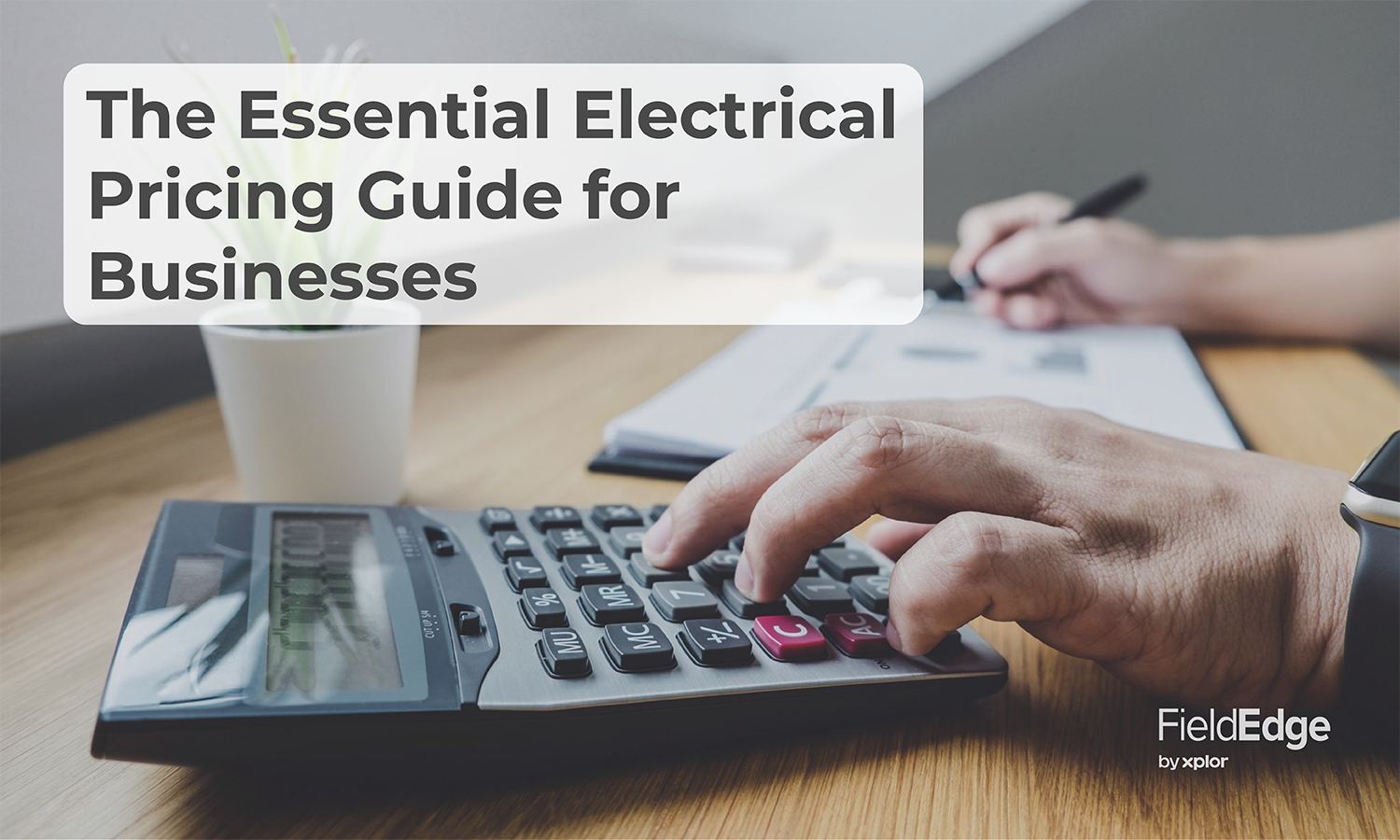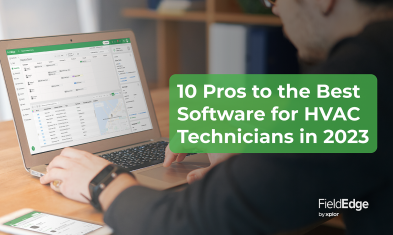With the right electrical pricing guide, you can easily maximize profits in order to scale faster and ensure long-term success.
Price your service too low, and you’ll eat into profits. And while higher prices bring in more money, it pays to increase a little at a time.
Use this complete electrical pricing guide to properly price your services for maximum profit based on:
- Profit goals
- Customer feedback
- Your break even point
- Insight from your target market
- Your financial advisor’s advice
By the end of this electrical pricing guide, you’ll be able to confidently price your services for the most profit in order to scale faster and instantly level up your business.
“Pricing is the only element in the marketing mix that produces revenue; the other elements produce costs.” — Phillip Kotler, Marketing Author
1. Understand Your Local Target Market
In order to set your electrical pricing, it’s important to gain insight from your local target market. As a result, you’ll be able to use that gained insight to beat the competition and sell more effectively to customers.
To get started, identify your ideal customer.
Think about your favorite customer (or a customer you’d like to win), and answer questions like:
- What’s their age range?
- Are they single or married?
- What’s their education level?
- What’s their household income?
- Do they have kids? If so, how many?
- What are some of their challenges or pain points?
- What do they do for a living? Do they have spare time?
As you answer these questions, it’s important to be as detailed as possible. The more detailed you are, the easier it’ll be to get to know your ideal customer. In turn, this will help you to set the most ideal price point that you can then target the right market with.
Next, discover what your customers want. The best way to do this is by sending out a survey to your most satisfied customers. Ask questions like:
- What about our electrical business do you love the most?
- Why did you choose us over other businesses?
- What do you care most about when choosing an electrical business?
Now, you can use this insight to improve your marketing strategies and increase conversions with:
2. Find Your Break Even Point
One of the most crucial elements in a robust electrical pricing guide is calculating your break even point. To begin, add up all of your monthly overhead costs:
- Utilities
- Electrical tools
- Electrician Software
/IT - Vehicle payments
- Vehicle insurance
- Business insurance
- Property rental costs
- Office staff/leadership pay
- Vehicle/equipment maintenance/gas
Next, find your total estimated labor costs. You can find this by multiplying these numbers together:
- Number of electricians on the team
- E.g. Usually it’s just one, unless it’s a bigger commercial job
- Average pay
- Hours worked
Then, you need to find your total monthly revenue required (your break even point) by adding both calculations together:
Total Monthly Business Overhead Expenses + Total Estimated Labor Costs = Total Monthly Revenue Required
Also, don’t forget to share your estimated break even point with your trusted CPA (i.e. Certified Public Accountant).
Did you know that you can easily track all of these costs and more using the best electrical software for your business? Sign up a FREE demo to explore how FieldEdge can help your electrical business!
3. Choose the Right Electrical Pricing Model
The most common electrical pricing models are: time and materials and flat rate pricing. Keep in mind, your pricing model might be a factor in your profit goals, calculating costs and more.
Time and Materials Pricing
In short, time and materials pricing is when you bill a customer for the technician’s time, plus any additional costs incurred from the project after it’s complete. However, this pricing model might be a harder sell for some customers (especially first-timers).
Since it helps to ensure your jobs are profitable, some electrical businesses choose to bill customers for projects using time and materials pricing. We will give more guidance on calculating time and materials costs later on.
Pros of Time and Materials Pricing
- Take more control over revenue by setting the profit margin for each project. Since you can calculate the cost after the project’s completion, there’s no need to know the exact average time and materials beforehand.
Cons of Time and Materials Pricing
- Since they prefer to know the upfront costs, it can be a harder sell to customers.
- It’s time consuming because you have to add up your electrician’s time and materials for every project in order to create a new estimate.
Flat Rate Pricing
Flat rate pricing is when you combine your electrician’s hourly rate with the cost of parts needed to bill customers for service calls and trips fees. Customers often prefer flat rate pricing since you present it on-site.
Whereas, time and materials pricing is used to bill for projects because these costs are oftentimes unpredictable.
Even though you need accurate average times and cost of materials to find your perfect flat rate price, a powerful electrical software (like FieldEdge) can track these numbers for you.
In turn, you can use FieldEdge to set prices for common services based on your best numbers.
Pros of Flat Rate Pricing
- Since surprise fees don’t spring up, your customers are more comfortable.
- You don’t need to create new estimates from scratch—just refer to your flat rate pricing database tool or book.
Cons of Flat Rate Pricing
- A flat rate book or tool is a must because you need to know PRECISE costs of materials per job.
- Rather than basing fees on each electrician’s time on the project, your electrician will have a set amount of time to complete jobs.
How to Use Flat Rate Pricing
Since flat rate pricing should be standardized and all of your electricians should be able to complete their jobs within a set timeframe using set tools and equipment, remember that flat rate pricing varies from service to service—not electrician to electrician. In turn, you won’t charge by the hour after the fact.
Even though flat rate pricing may appear to be a bit daunting, it doesn’t have to be. When you know your numbers and have set systems in place for equipment and task pricing, you’ll have the ability to ensure every job is profitable—all without spending additional time on estimates. Simply use the information in this electrical pricing guide and calculator to get started!
Don’t forget to take into consideration the wide variety of equipment costs as you’re setting up your flat rate pricing tool or book. Remember, the more precise your flat rate pricing, the easier it will be to reach profit goals.
Service Calls and Trip Fees
Sometimes, electrical businesses charge a minimum two-hour service fee in addition to a flat trip fee. However, if the work exceeds the two hour time window, then you’ll have the ability to switch to flat rate pricing if you choose.
In this case, you’d only charge for the labor of the specific tasks you’ve completed. Depending on the project, you might either offer a discount or waive the two-hour service call fee altogether.
Usually, your trip fee is a set price. However, don’t forget to take your local traffic into consideration.
For instance, if you’re servicing someone in a low traffic area, then you might set a lower trip fee and vice versa. Though, don’t forget about rural areas with no traffic either, since there will be more drive time you need to take into consideration.
We recommend lowering your service call fee and raising labor rates in flat rate pricing to attract more first-time customers. As a result, you’ll not only attract more first-time customers, but you’ll also maintain the same profit in your flat rate pricing model.
Did you know the #1 electrical software has the power to automatically and accurately track time and materials? Book a FREE demo to experience what FieldEdge can do for your electrical business!
4. Calculate Project Costs
Once you know your pricing model, you need to determine on-site costs so you know how much to charge for specific projects.
First, calculate your total project material expenses by adding up these numbers:
- Total cost of parts/equipment per job (FieldEdge can help with this!)
- Total cost of chemicals per job
- Disposal costs
Be sure to add up ALL of your specific project costs. Then, calculate your total project materials cost by inputting the previous calculation into this formula:
Total Project Material Expenses + (Total Project Material Expenses x Profit Margin) = Total Project Materials Cost
Next, multiply these numbers to find your total labor costs:
- Hourly rate
- Estimated number of hours
Then, calculate total project labor costs by inputting the previous calculation into this formula:
Total Project Material Cost + Total Project Labor Cost = Total Project Cost
5. Set Achievable Profit Goals
After following all of the other steps in this electrical pricing guide, you’re ready to set achievable profit goals that you can incorporate into your pricing for each service.
Step 1: Calculate Your Business’ Net Income
In order to set achievable profit goals, you need to know your electrical business’ net income. You can calculate your net income by using this formula:
Net Income = Total Revenue – Project Costs- Labor Costs – Overhead Costs
Next, you need to know your profit margin. For this step, simply use the net income you just calculated to help you solve for this formula:
Profit Margin = Net Income / Total Revenue
Step 2: Incorporate Your Profit Margin Goals into the Total Price of the Service
Now, you need to test out a few different profit margin goals to discover what works best for you. Keep in mind, your sales and job goal will simultaneously increase with your increased profit margin goals. The main priority here is to keep your profit goals ambitious, yet achievable.
Step 3: Analyze the Competition’s Electrical Pricing to Stay Realistic
Your electrical pricing is tied to your company’s reputation. Price your services too high, and you may come off as arrogant (and you may lose business). Price your service too low, and you may come off as the bargain basement business—calling your quality into question.
If you’re pricing your services considerably lower or higher compared to the majority of your competition, then consider adjusting your electrical pricing.
Since the competition’s costs and goals are different, you can’t copy their pricing. However, it will give you a general idea of whether you’re in the right vicinity.
Once you’ve incorporated your profit goals into your pricing model, you can compare these prices to your competitors to see where you stand.
6. Verify Your New Electrical Pricing With a Trusted CPA
As with ANY major financial decision in your business, it’s absolutely essential that you verify your new electrical pricing with a trusted CPA prior to testing or finalizing it.
Your CPA can tell you how much you need to charge as well as any other factors you might’ve forgotten to consider. Since your finances are vital to the success of your electrical business, this step is critical.
7. Use a Flat Rate Book
When you follow the flat rate pricing model, use an electrical price book to provide potential customers with detailed explanations of your services and pricing.
It’s important to take advantage of a book or digital tool to assist customers in understanding costs. Plus, it keeps you from answering the same pricing questions on a daily basis. Your flat rate book or tool should contain items such as:
- Your business name and contact information
- Disclaimer that ALL estimates are subject to change
- Breakdown of costs for each task and piece of equipment
FieldEdge also helps you with an in-the-field pricebook and invoicing. Instead of using a physical pricebook, you can go paperless with FieldEdge Flat Rate Mobile. Book a FREE demo of FieldEdge now!
Unlock New Growth With This Electrical Pricing Guide
Did you know, even a 1% raise in pricing can result in an 11% increase in profits?
Now, you have all the tools you need to to maximize your profits and conquer goals!
With this all-in-one electrical pricing guide and calculator, you know which factors you need to consider as well as how you’ll implement new prices using:
- Your local target market
- Break even point
- Project costs
- Profit goals
- CPA insight
Use the expert strategies in this complete electrical pricing guide to help you build a long-lasting business that’s profitable for many years to come!
Related: How to Leverage Your Electrician Prices List on the Job




